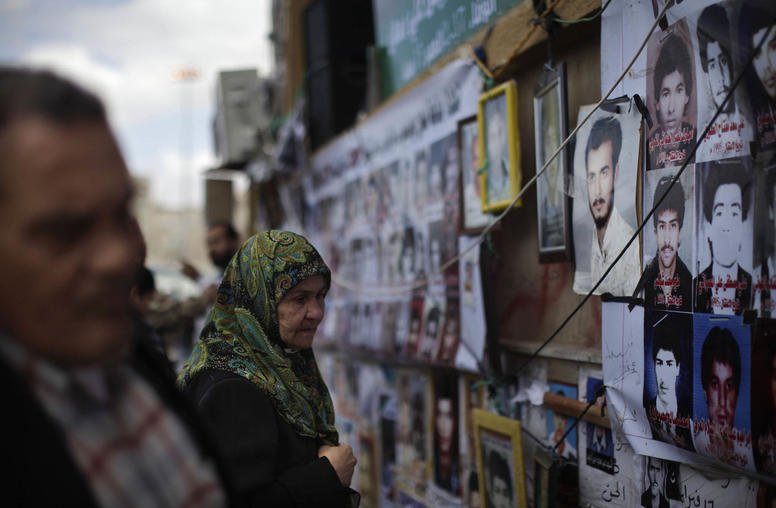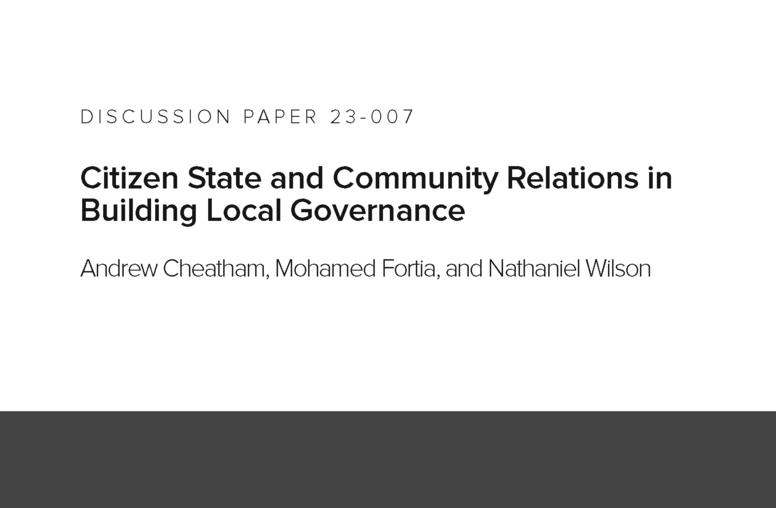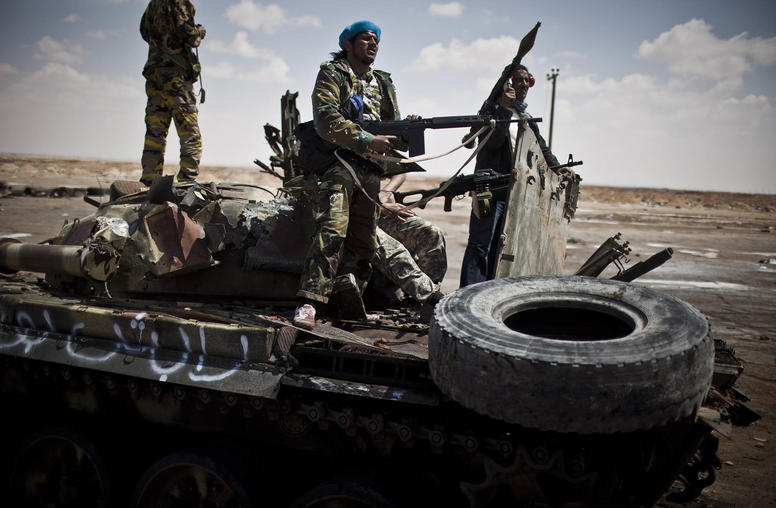The New U.S. Plan to Stabilize Conflicts: The Case of Libya
An effort under the Global Fragility Act can build on Libyans’ demonstrated grassroots peacebuilding.
Almost 11 years after ousting the dictatorship of Muammar Qaddafi, Libya remains a largely ungoverned land divided among warlord-led factions that fight with support from rival foreign countries. Libya’s instability resonates widely, permitting the trafficking of weapons to the Sahel and migrants to Europe. Repeated peace efforts have failed to help Libyans form a unified national government, yet Libyans continue to show the capacity to overcome communal divisions and build peace at local levels. That demonstrated capacity offers an opportunity that can be expanded by the U.S. government’s decision, under its Global Fragility Strategy, to direct a new peacebuilding effort toward Libya.

Libya: Risks Rising in 2022
Following the overthrow of Qaddafi’s 42-year regime, Libya imploded in violence in which its three historical regions — the east, west and south — struggled for power and control over resources, notably the country’s oil fields. Effectively, Qaddafi’s rule left Libyans with no consensus on their social contract among themselves, or with their government. Deep divides emerged over questions as basic as whether to form a centralized or federated state. More than half of the population is aged between 15 and 40, creating a massive problem of unemployed, under-educated youth vulnerable to recruitment as fighters for militias or extremist organizations.
Worse, a wide array of outside powers play roles in the conflict, many of them backing various factions in the war with weapons or mercenaries that have increased the violence. Recent assessments by humanitarian organizations have found 800,000 people nationwide displaced — either Libyans uprooted by the fighting or foreign refugees and migrants — and a similar number in need of humanitarian aid.
The most recent attempt to help Libyans establish a unified government stalled last year after a U.N.-supported political dialogue chose an interim government to hold elections in December. But the elections were postponed and tensions are rising. One of Libya’s rival blocs, based in the country’s east, appointed what it proclaimed a new national government in March, a rival to the existing interim administration in Tripoli. That move has revived the recent years’ problem of dual claimants to power, and also reflects a shifting of alliances in the long struggle among Libya’s regions.
With a recent rise in human rights violations, hate speech and violence, “Libya is now facing a new phase of political polarization, which risks dividing its institutions once again and reversing the gains achieved over the past two years,” U.N. Undersecretary General Rosemary DiCarlo said last month.
The White House announced April 1 that Libya will be one of five countries or regions facing violence where the United States will provide new support for peacebuilding under its new strategy mandated by the 2019 Global Fragility Act. (The other priorities are Haiti, Mozambique, Papua New Guinea, and five West African coastal states from Benin to Guinea.) Following years of efforts that showed too little progress in advancing peace in chronically violent, “fragile” states, the new strategy requires a longer-term investment: 10-year commitments of assistance to be offered within better coordinated strategies for economic and human development, and for conflict resolution. It steps back from what analysts — including a USIP-convened Task Force on Extremism in Fragile States — found was an over-reliance on military operations in response to extremist violence and insurgencies.
The new U.S. decision to invest in helping to stabilize Libya is vital, for like other long-running conflicts, the Libyan turmoil risks losing global attention, notably in the shadow of last year’s collapse of government in Afghanistan and this year’s escalation of Russia’s assault on Ukraine. The latest annual Fragile States Index, maintained by the Washington-based research group, the Fund for Peace, found Libya the country in the world where stability had most worsened during the period 2011 to 2021, ranking it just 17th from the bottom for risks of instability among 179 nations surveyed.
Potential for Improvement
Yet Libyans’ own peacebuilding work underscores that a targeted U.S. investment in the country’s stability will have allies and the potential for impact. A vital feature of Libya’s potential is its often-unnoticed flourishing of local civil society groups. In 2014, only three years after the overthrow of Qaddafi’s government created the possibility to establish voluntary associations, 2,000 such groups were active in Libya — a per capita ratio six times that of Iraq and parallel to that of Egypt, one study found.
Over recent years, USIP has worked in disparate parts of the country, training peacebuilders, notably among youth and civil society groups—and then allying with those communities and local governmental authorities. With those efforts, grassroots Libyans have built peace in their own communities, even as the country’s national-level factions escalated fighting, as around the capital, Tripoli, in 2019 and 2020:
- Rival ethnic groups, Arab and Amazigh, in western Libya’s Nafusa Mountains united in 2020 to reopen roads and repatriate community members who had been caught away from their homes by lockdowns triggered by the COVID pandemic. Communities that previously had fought violently reached an agreement to share medical resources in combatting the virus.
- In 2019, a movement of local peace advocates, including notably the courageous mother of a young man killed in tribal fighting, persuaded tribal leaders in the Saharan city of Ubari to end local warfare and sign a peace accord. Once stabilized, this city of 35,000 people was able to build a new central marketplace, with U.N. funding, to boost the local economy.
- USIP-supported peacebuilders in Libya’s main southern city, Sebha, united rival tribes to consolidate peace in the city — home to 100,000 people — following warfare there.
The U.S. designation of Libya for a reinforced, long-term peacebuilding effort will refocus U.S. policymakers and vital resources on resolving the conflict. It also can revive international attention and contributions to the effort. A more stable, self-sufficient Libyan state can provide for the needs of its people, reduce the dangerous covert trafficking of migrants to Europe, and work with international partners to counter extremism and terrorism. It will be able to withstand pressures from Russia or other states that may seek to destabilize Libya or its neighbors.
The next step will be to apply diplomacy and foreign assistance to bring Libya’s combatants back to the negotiating table for the vital initial goal of setting and implementing a roadmap to national elections. In such a renewed effort, the United States should engage other international actors to help incentivize Libyan political leaders to resolve outstanding differences.


